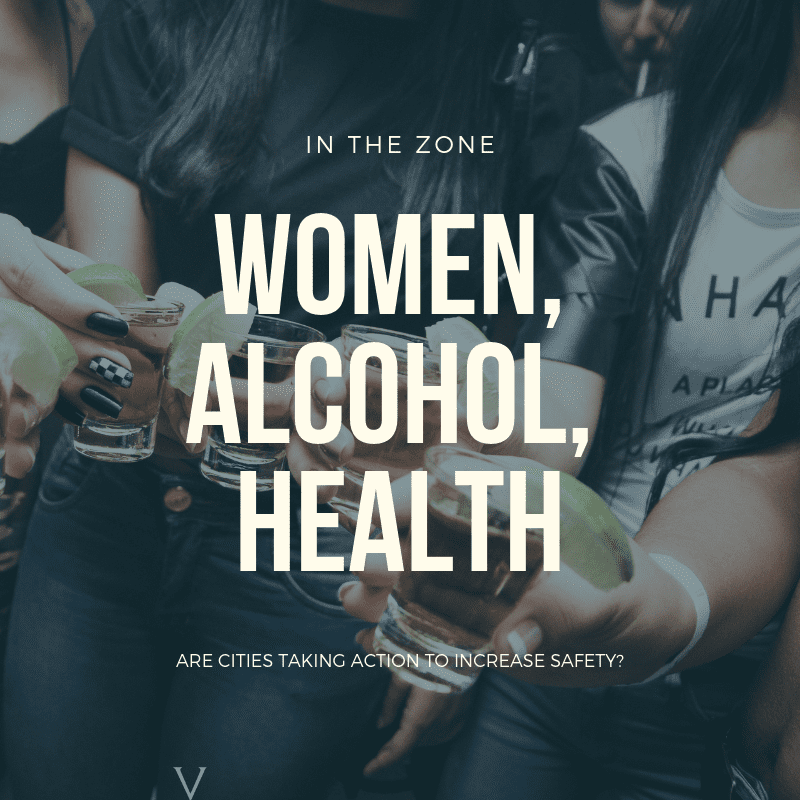Study after study has found that concentrations of alcohol outlets – particularly those that sell for consumption off-site – are associated with greater violence and other problems in the neighborhoods around them. Homicides, assaults, robberies and other crimes go up when the number of alcohol outlets in a neighborhood increases.
Included in this list are intimate partner violence, sexual assault and rape. One study even found that the advertising sexualizing women that often covers the exterior of such establishments was associated with increased assaults on women in those neighborhoods.

Women are already at a significant disadvantage to men when it comes to drinking. Because of differences in the way male and female bodies metabolize alcohol, the same amount of alcohol will have greater effects on a woman than a man, when drunk at the same pace and by persons of similar body size and drinking history.
Other consequences of drinking specific to women include higher risk of breast cancer – 15% of U.S. breast cancer cases and deaths from breast cancer are considered attributable to alcohol use. There is no safe level of consumption for alcohol-attributable breast cancer – one study found that a third of the cases happened at levels of consumption of one and a half drinks per day or less.
Drinking among women has been rising in recent years. The amount and frequency of drinking and high-risk drinking by women increased between 2002 and 2012, at the same time that men’s frequency fell. Binge drinking (four or more drinks within two hours for women) rose more than three times as fast among women as among men.
These differences are showing up in local emergency rooms, where visits involving alcohol consumption have risen significantly faster for females than for males in recent years. Between 2002 and 2012, alcohol dependence (addiction) rates fell among men, but not among women. Alcohol causes an estimated 25,693 deaths per year among women nationwide.
Studies have repeatedly connected alcohol outlet density with violence against women. In Bloomington, Indiana, higher off-premise outlet density in a block group was associated with greater intimate partner violence in that block group. In Milwaukee, density of both on- and off-premise alcohol outlets was associated with greater non-intimate partner-related violence against women.
Bars and restaurants, selling for on-premise consumption, have smaller effects on public safety than off-premise outlets, but the effects can still be there. Atlanta found that a three percent drop in on-premise alcohol outlet density in one popular neighborhood was associated with twice as large a drop in exposure to violent crime than two comparable neighborhoods where the number of alcohol outlets increased.
Off-premise outlets, however, seem consistently to have a higher impact on the neighborhood around them, possibly because they increase the supply of alcohol without providing any kind of supervision for the drinking that ensues.
Beginning in the early 1990s, cities across California began to use local zoning tolls to reduce the proliferation of alcohol outlets in their neighborhoods. While licensing of alcohol outlets is often the responsibility of state agencies, zoning in many states is a local power. The best practice has involved setting new, local zoning-based standards for all alcohol outlets, and using a fee on those outlets to fund enforcement of those standards.
Among the nation’s 40 largest cities, CityHealth has found that just 8 have explicitly taken the kinds of local zoning authority that permit them to control the number of alcohol outlets in a neighborhood. This authority ideally gives local communities the right to a say in the number of outlets that sell for on- or off-premise consumption, and to exercise that right both going forward, for new outlets, and over the number of outlets currently in place.
Taking and exercising cities’ right to a voice in the number, placement and sales and service practices of alcohol outlets within their borders could play a significant role in helping to win that battle.






